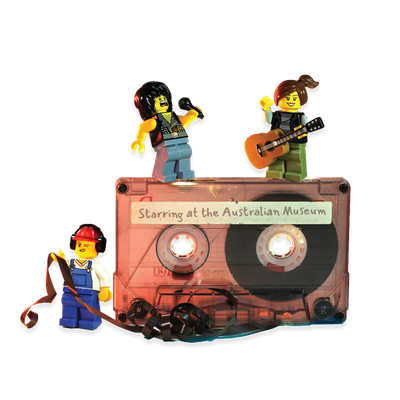Your search returned 83 results
By Page Type
By Tag
- All
- fish (966)
- blog (698)
- fishes of sydney harbour (400)
- First Nations (293)
- Blog (236)
- AMRI (169)
- archives (165)
- Aboriginal and Torres Strait Islander (135)
- Eureka Prizes (131)
- insect (126)
- Ichthyology (125)
- geoscience (109)
- minerals (102)
- climate change (98)
- podcast (94)
- Fish (91)
- Anthropology (89)
- International collections (80)
- Minerals Gallery (78)
- wildlife of sydney (78)
- Labridae (77)
- frog (73)
- gemstone (70)
- history (63)
- photography (63)
- staff (61)
- Mollusca (60)
- gem (59)
- Birds (58)
- education (57)
- Gems (56)
- Indonesia (56)
- AMplify (54)
- shark (54)
- people (53)
- exhibition (51)
- earth sciences (50)
- past exhibitions (50)
- Gobiidae (48)
- Pomacentridae (45)
- sustainability (45)
- Serranidae (44)
- science (43)
- lifelong learning (42)
- Earth and Environmental Science (41)
- Syngnathidae (41)
- Ancient Egypt (40)
- Bali (40)
- bird (40)
- dangerous australians (40)
-
Classification of sedimentary rocks
https://australian.museum/learn/minerals/shaping-earth/classification-of-sedimentary-rocks/Sedimentary rocks are classified according to the predominant grain size present, as well as by their mineral content.
-
Azurite on Cerussite
https://australian.museum/learn/minerals/mineral-factsheets/azurite-on-cerussite/This beautiful specimen contains the largest Broken Hill azurite crystal in our collection.
-
Molybdenite on quartz
https://australian.museum/learn/minerals/mineral-factsheets/molybdenite-on-quartz/With its large, curved, silvery, flexible and metallic crystal flakes scattered over quartz crystals in an aesthetic arrangement, this is the best molybdenite (molybdenum sulphide) specimen of its type in the world.
-
Azurite with Cerussite
https://australian.museum/learn/minerals/mineral-factsheets/azurite-with-cerussite/This magnificent plate of dark blue azurite (copper hydroxy-carbonate) crystals from the oxidised zone of the Broken Hill orebody was acquired by Albert Chapman from a Broken Hill mine ‘trucker’ who ‘collected’ it in the 1950s.
-
Heulandite
https://australian.museum/learn/minerals/mineral-factsheets/Heulandite/This is an attractive group of lustrous, orange, diamond-shaped crystals arranged in radiating sheaves.
-
Smithsonite on Coronadite Stalactite
https://australian.museum/learn/minerals/mineral-factsheets/smithsonite/These small, sugary, white smithsonite crystals are encrusting branching stalactites of coronadite (lead, manganese oxide).
-
‘Welcome’ Gold Nugget Replica
https://australian.museum/learn/minerals/mineral-factsheets/welcome-gold-nugget-replica/The Australian Museum has a set of 43 gold nugget replicas, some acquired up to 135 years ago, representing every Australian state except South Australia, as well as New Zealand.
-
Alabandite with Calcite
https://australian.museum/learn/minerals/mineral-factsheets/alabandite-with-calcite/Alabandite is a rare manganese sulphide mineral found in only a few locations in the world, but Broken Hill has produced some of the best and largest examples.
-
Chalcopyrite on quartz
https://australian.museum/learn/minerals/mineral-factsheets/chalcopyrite-on-quartz/These large, golden tetrahedral chalcopyrite (copper iron sulphide) crystals on quartz matrix were purchased in the mid-1960s by Albert Chapman from John Cerlienco of South Australia.
-
Azurite
https://australian.museum/learn/minerals/mineral-factsheets/azurite/These large, golden tetrahedral chalcopyrite (copper iron sulphide) crystals on quartz matrix were purchased in the mid-1960s by Albert Chapman from John Cerlienco of South Australia.
-
Find out more
Tails from the Coasts
Special exhibition
On now![]()
-
Find out more
Burra
Permanent kids learning space
10am - 4.30pm![]()
-
Discover more
RELICS
Special Exhibition
Opens 16 August 2025![]()
-
Discover more
Minerals
Permanent exhibition
Open daily![]()





